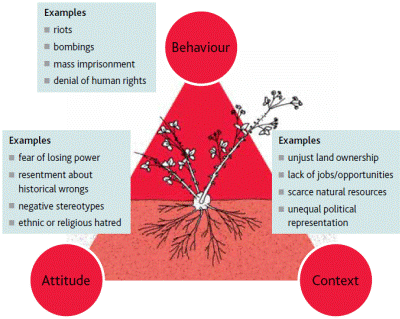When conflicts become violent, there are generally three ways for organisations working in the conflict zone to respond:
- Working around the conflict We stop working in areas that have passed a certain threshold of violence.
- Working in the conflict We continue to serve in violent areas in a ‘conflict-sensitive’ way, but we don’t try to address the conflict directly.
- Working on the conflict We work on reconciliation, peace-building, and addressing the underlying causes of violence.
Working in conflict is almost as challenging as working on conflict – because both require us to start with a detailed
conflict analysis. Whether we want to actively build peace or just to keep working in a violent environment without doing harm, we need to start by understanding the conflict.
Without a good conflict analysis, we cannot answer the questions that are the cornerstone of a conflict-sensitive approach:
‘How will our work affect the conflict?’ and
‘How will the conflict affect our work?’ And if we get the answers to these questions wrong our projects can easily do harm, increasing people’s vulnerability to conflict and putting ourselves and our staff at risk.
Two common conflict analysis tools are:
- the ABC triangle (see below)
- the Conflict map.
For more, see the RTC book Working with Conflict: skills and strategies for action and the Tearfund Good Practice Guide on Conflict Sensitivity.
ABC triangle
In a conflict, the violent behaviour we see has its roots in people’s attitudes and the political-economic context. The ABC triangle is a simple framework for exploring the impact and causes of conflict. You should complete one triangle for each of the major groups involved in the conflict.
If you are working in conflict, you can use the triangle to answer questions like:
- How will our work be affected by the behaviours we have identified? Will it affect any of the contextual factors that drive the conflict?
- How will our staff and our work be perceived by each group, given the attitudes we have identified?
If you are working on conflict, you can also use the triangle to answer:
- How can our work restore relationships by addressing negative attitudes?
- How can our work improve the contextual factors that are driving the conflict?

Behaviour
Examples
- riots
- bombings
- mass imprisonment
- denial of human rights
Attitude
Examples
- fear of losing power
- resentment about historical wrongs
- negative stereotypes
- ethnic or religious hatred
Context
Examples
- unjust land ownership
- lack of jobs/opportunities
- scarce natural resources
- unequal political representation







